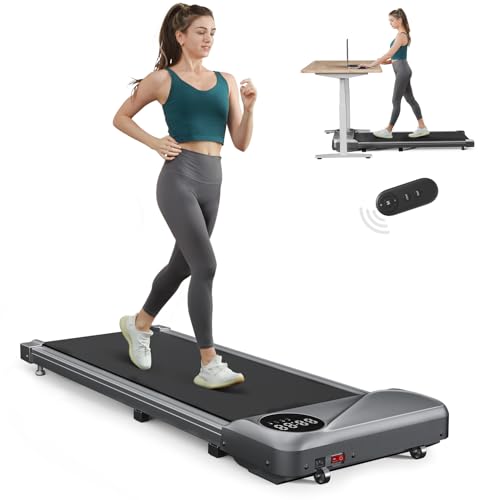The Walking Machine: A Comprehensive Guide to Your Fitness Companion
In today's fast-paced world, where time is a luxury, keeping a constant exercise regimen can be an obstacle. For lots of, a walking machine-- typically called a treadmill-- works as an ideal physical fitness companion. This short article offers a thorough take a look at walking machines, including their benefits, types, upkeep ideas, and regularly asked concerns.
Why Choose a Walking Machine?
Walking machines use a practical and effective way to include cardiovascular workout into life. Here are a number of essential benefits:
- Convenience: Walking machines allow people to work out anytime, despite weather conditions or time restraints. They are best for busy schedules.
- Versatility: Users can stroll, jog, or perform at their own rate and strength.
- Safety: Walking machines provide a lower danger of injury compared to outdoor walking or running, specifically for novices or those recuperating from injuries.
- Tracking Progress: Many treadmills featured integrated displays that track metrics like speed, range, and calories burned.
Types of Walking Machines
When thinking about a walking machine, it's vital to choose the right type based upon individual fitness objectives and space restraints. Below are the main kinds of walking machines:
| Type | Description |
|---|---|
| Handbook Treadmills | These machines do not have a motor, and users need to stroll or run to rotate the belt. |
| Electric Treadmills | Powered by an electric motor, allowing users to set the speed and incline effortlessly. |
| Folding Treadmills | Developed for simple storage, these treadmills can be folded when not in usage. |
| Desk Treadmills | Suitable for a double work and exercise environment, these compact machines allow walking while working. |
| Slope Trainers | These enable users to replicate uphill walking, enhancing workout intensity and calorie burn. |
Selecting the Right Walking Machine
Choosing the best walking machine can considerably impact inspiration and effectiveness. Here are some aspects to consider:
Key Features to Look For
- Motor Power: A powerful motor ensures a smooth and constant workout. For periodic walkers, a 1.5 HP motor is normally sufficient; for much heavier usage, search for 3.0 HP and above.
- Belt Size: A larger and longer belt offers more area for a comfortable stride. Standard sizes vary from 16 inches broad and 50 inches long.
- Slope Options: Adjustable incline settings can replicate walking or running uphill, increasing the intensity of the exercise.
- Shock Absorption: Good shock absorption lowers the threat of joint injuries and improves convenience.
- Console Features: Look for built-in workouts, heart rate screens, and connection features like Bluetooth for a more interesting experience.
Budget Considerations
Walking machines come in a wide range of costs, depending on functions and construction quality. Here's a rough budget plan breakdown:
| Price Range | Features |
|---|---|
| Under ₤ 300 | Standard manual or little electric treadmills with limited functions. |
| ₤ 300 - ₤ 700 | More advanced electric treadmills with slope, medium power motors, and better guarantees. |
| ₤ 700 - ₤ 1500 | Top quality electric treadmills with bigger integrated display screens, extensive functions, and service warranties. |
| ₤ 1500 and above | High-end designs providing advanced innovation, features, and resilient building and construction for major fitness enthusiasts. |
Maintenance Tips for Your Walking Machine
To guarantee longevity and optimal efficiency of a walking machine, consider the following upkeep pointers:
- Regular Cleaning: Dust and sweat can collect on the machine and the belt. Clean down the surfaces and tidy the belt routinely.
- Lubrication: Depending on the design, lubing the running belt regularly can prevent wear and tear. Examine mouse click the next web page for advised lubrication schedules.
- Inspection: Periodically inspect the machine for loose screws or used parts. Tighten and change as required.
- Calibration: Occasionally, inspect the calibration of your machine's metrics to guarantee they offer precise information.
- Proper Use: Follow the maker's recommendations for weight limits and operational standards.
FAQs About Walking Machines
1. Are walking machines a great workout?
Yes, walking machines provide an excellent cardiovascular exercise, can help with weight-loss, and improve general health.
2. How typically should I utilize a walking machine?
Goal for a minimum of 150 minutes of moderate-intensity aerobic activity each week, which can quickly be attained with routine sessions on a walking machine.
3. Can I slim down on a walking machine?
Yes, including a walking machine regimen into a healthy diet plan can promote weight reduction, especially if integrated with periods and incline training.
4. Is it safe for elders to use a walking machine?
Yes, walking machines can be safe for senior citizens with low-impact settings and security features like hand rails. However, individuals must consult with their health care supplier before starting any exercise program.
5. What's the difference in between a treadmill and a walking machine?
The term "walking machine" generally refers to a treadmill planned for walking, while "treadmill" can describe machines used for numerous intensities, including running.
With their flexibility and convenience, walking machines can substantially enhance one's physical fitness journey. By carefully choosing the ideal type, guaranteeing correct upkeep, and including different exercise techniques, users can optimize their walking machine's advantages. Just like any exercise regimen, consistency is crucial to accomplishing lasting fitness results.

